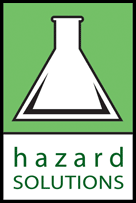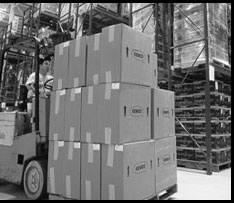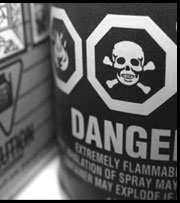Recycling Organic Wastes
Infobrief 2
by Art Mahoney, M.S., CHMM, REA
August 26, 2004
To Reduce or Recycle–That is the Question
This infobrief discusses some of the most common ways to recycle organic hazardous wastes. Before we proceed further let us define a few terms. For the purpose of this newsletter, an organic hazardous waste is a hazardous waste which contains at least 50 percent (by weight) of organic chemicals. Examples of organic hazardous wastes, include:
- ethanol-which is flammable
- mixture of turpentine(50%)/water (50%)–which is flammable
- allyl alcohol–which is toxic, corrosive and flammable
As was discussed in infobrief 1, the preferred method to minimize hazardous waste is to reduce it at its source (i.e., source reduction). If source reduction is not feasible, then recycling is your next best option. Recycling includes: use, reuse and reclamation (see infobrief 1).
Some Recycling Options—The Next Best Option
Use And Reuse: The first question to ask yourself is: Is this waste material still “useable” in its current state? Does it really need to be processed or treated? Some materials which to you are a waste, may have value to others just as they are. As an example, unexpired surplus chemicals (especially solvents-such as acetone or IPA) can be donated to high schools and colleges. Additionally, a “slightly” contaminated organic reagent that may not meet the strict requirements of your manufacturing process, may be suitable for a different process at another facility.
Redistillation: Some contaminated organic wastes may be redistilled and either returned back to you after they are purified or possibly sold to other businesses by your company or the redistiller. To be cost-competitive with other options, redistillation usually takes at least a few hundred gallons.
• Lacquer Wash Thinner
• Ethylene Glycol
• Freon
• Methyl Ethyl Ketone
• 1,1,1-Trichloroethane
• Methylene Chloride
• N-Methyl-2-Pyrrolidone
• Toluene
• Perchloroethylene
• Isopropyl Alcohol
• Xylene
• Perfluorohexanes
Used Oil Recycling: Used oil is the largest hazardous waste stream generated in California. It includes oil refined from crude oil or synthetic oil that has been contaminated with chemical or physical impurities. There are additional criteria, for example, it must contain less than 1000 parts per million (ppm) halogens. Its management is regulated under H&SC 25250.1 and 22 CCR 66279. Used oil must be recycled. It is unlawful to incinerate used oil or to mix it with other hazardous wastes (with some exceptions for auto shops).
Fuel-Blending: Some liquid and solid organic hazardous wastes can be used as fuels at incinerators, boilers, and industrial furnaces (or BIFS) and cement kilns. The wastes are first blended at a licensed hazardous waste blending facility to meet fuel acceptance criteria and then transported (by truck or rail) to the end facility. To be eligible for fuel blending, the wastes must have a fairly high energy content (minimum 5000 BTU/lb), usually less than 10 percent chlorinated compounds, low metal content, and no PCBs. It is estimated that cement kilns now burn about 90% of all commercially incinerated liquid hazardous waste in this country, and a growing percentage of solid hazardous wastes.
Toluene = 18,252
Acetone = 13,000
Water = 0
Heating oil = 22,000
• Mixed organic solvents (acetone, ethanol, toluene, etc)
• Paint thinners and sludges
• Solvents and inks
• Offspec solvents
• Contaminated lab debris (e.g., used paper towels)
• Contaminated saw dust (from spills)
For assistance in minimizing hazardous waste, please contact us at 650.347.0417 or e-mail at art@hazardsolutions.com.
Kind Regards and Good Luck
Arthur Mahoney, MS, CHMM, REA



